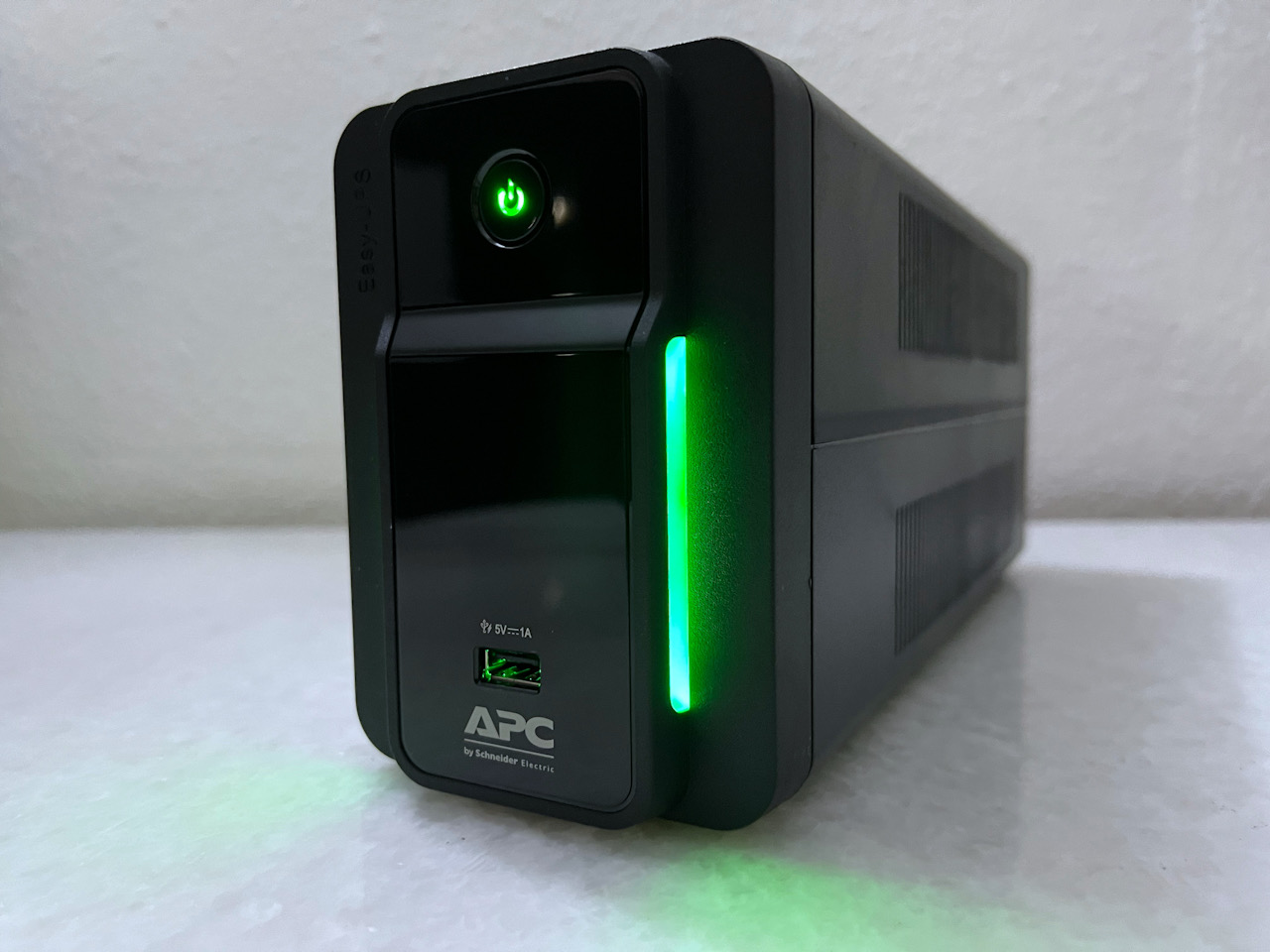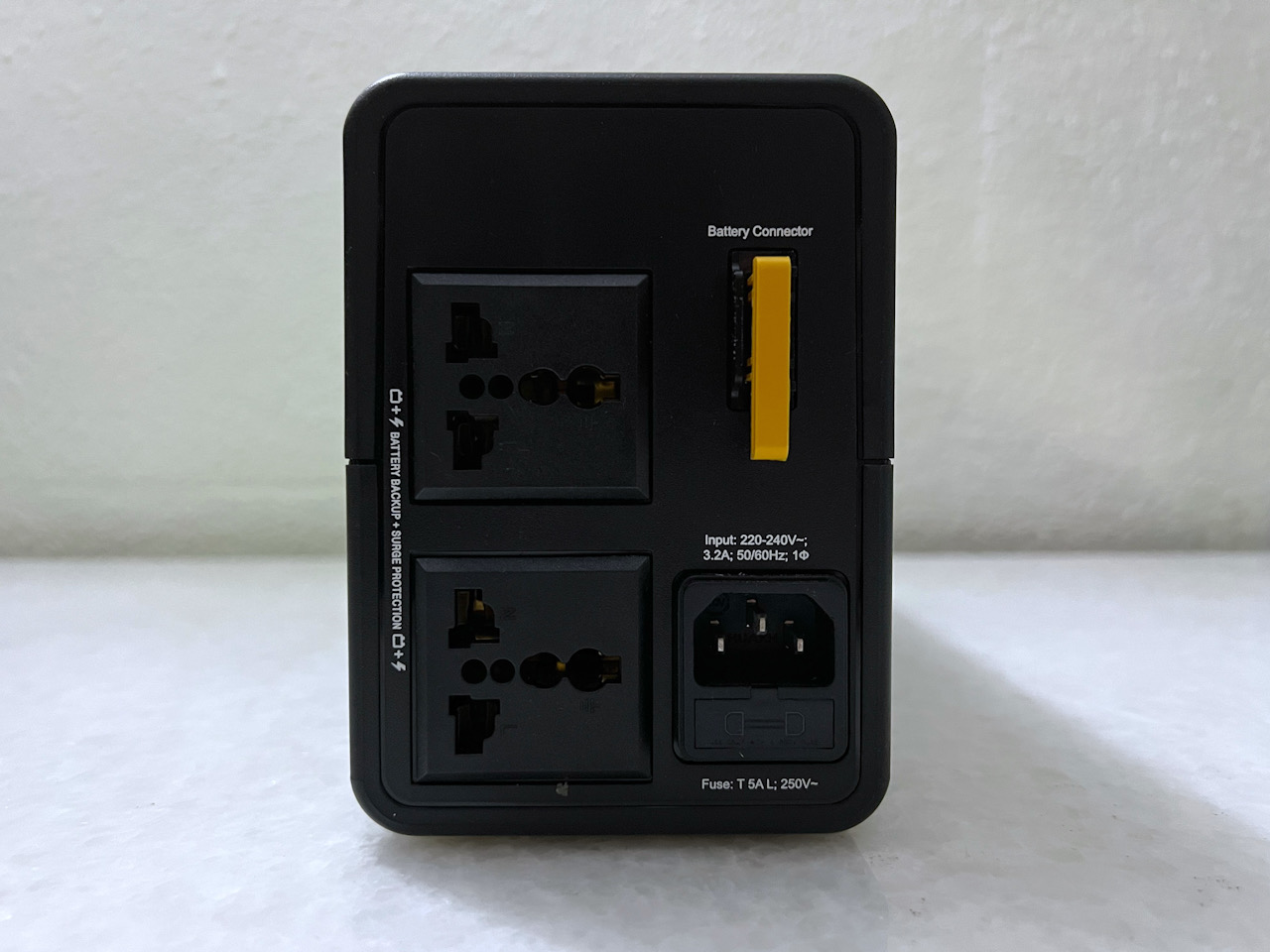Is a basic Uninterrupted Power Supply actually useful?

I was asked to take a look at an Uninterrupted Power Supply (UPS) from APC (Easy UPS BVX700LUI-MS, but let’s call it BVX700 for short) and I agreed anyway despite knowing that it’s going to be kind of odd for a number of reasons.
For one, the BVX700 is a fairly basic UPS, which makes it pretty much a glorified battery pack with some extra features. But therein that characterisation lies an ignorance that I think many of us share.
I probably had a few misconceptions as well and this is as good a time as any to figure some things out. So, why would anyone need a UPS?
If you are vulnerable to the dangers of unstable voltages, power surges and constant blackouts, the UPS is particularly useful.
Trouble is, we live in Singapore, which is pretty much devoid of these issues. What is most likely to happen is one faulty device trips your entire circuit box and that alone is enough to give you a bad time.
The BVX700 is a line-interactive UPS, which means it’s a hybrid type that only switches to the battery when there’s a problem. A true online UPS is a bit of an overkill in most cases and the hardware is on average more expensive.
Line-interactive solutions make it possible to achieve its primary tasks for less money. It keeps devices going until you intervene and initiate recovery protocols and at the same time it can equalise wide fluctuations in voltage (brownout) too.
However, there are some fundamental limitations with a hybrid design; it generates a simulated sine wave current, which means that sensitive equipment like audiophile equipment and medical equipment might not function well – but I don’t think this is relevant here.
For most of us, there are two main reasons for having a UPS; one is when you’re running mission-critical tasks on a desktop computer – not of the gaming kind, but who am I to judge your priorities in life – in which case it adds the one benefit a laptop has over its desktop counterpart in this scenario.

The other is when you have a Network Attached Storage (NAS) in your network and you use it constantly to back up data or to store critical files.
Power cuts whilst writing data to storage can compromise the integrity of the array in the NAS.
NAS systems are often configured in Raid and failures can result in you having to rebuild the array with the last backup copy, which is something that not most people have – the NAS often is the backup. And anyone who works with NAS regularly would rather avoid having the issue in the first place.
So the UPS is also a natural companion for the NAS, and some NAS are even designed to work with UPS and power down safely in pre-configured circumstances.
Other potential uses don’t stray far from the theme – if you are on an important video conferencing call and for some reason, you can’t afford to drop out suddenly, then it makes sense for you to keep the router up and running.
Other possible cases where having a constant power supply is useful is when you have security cameras or baby monitoring cameras that are not battery powered.
That said, we have to remember that the main purpose of these devices is to hang in there like some plot armour gimmick and buy you time so that you can make your heroic return to save the day – your direct intervention is very necessary to shut everything down until normal power resumes.
The UPS isn’t designed to be a convenient power source.
[[nid:582921]]
In other words, it’s not a bad thing that the BVX700 is a rather basic model because the value add for that $110 price tag is worth it.
If you consider that a typical power strip with surge protection already costs around $50, a UPS with surge protection makes sense if you only intend to protect your computer networks.
For the price, we have to accept that the casing is as basic as it gets – it’s just a plastic shell. A glossy front panel and LED windows are the only elements that offer any decorative qualities.
However, APC uses two translucent strips to diffuse the LEDs that indicate that the UPC is functioning properly and I think they are a bit on the large side.
It can be a little bright if it’s on your desktop. I’d rather place it in a corner as the LEDs are bright enough to give you a status update from a distance. That said, the alarm is loud enough to alert you to a problem, and thankfully in intervals.
And aside from a power button, there’s a 5V 1A USB port on the front so that you can slow charge your mobile phones or headphones. This feature feels more like an afterthought, but it’s nice to know you can charge your phone without worries, though you have to live with the fact it’s really slow.

At the back, you have a power input, two universal sockets with surge protection and a physical battery connector that you can disconnect as an extra layer of protection in the event of unstable conditions and you don’t want to risk damaging the battery.
There are no user-replaceable fuses given that this is an entry-level model but if I really have to nitpick, is it too much to ask to have rubber feet? Granted, the 4.5kg weight of the UPC should be enough to keep it planted, but having some padding would be good to prevent scratches to your table.
UPS systems often employ a lead-acid battery as a power source for a variety of reasons, but mainly because it’s cost-effective. Lead-acid batteries are fairly consistent in operating at low and high temperatures and can handle high discharge currents, which are things you would want in a device like this. And no – you can’t stick a fridge at the end of this.
A downside of this battery is that you need to effectively charge it for 24 to get it to maximum capacity – in this case, it’s about a full 24 hours. But this is the only time you need to do this because of the nature of UPS. Fortunately, when left on its own the BVX700 isn’t noisy; it’s only warm to the touch.
[[nid:580832]]
So how much power can this UPS provide? I’ve managed around 45 to 50 minutes at best on a low power setup but I think that’s hardly a realistic representation.
On the flip side, gaming setups will literally drain the battery in a heartbeat. Depending on the power draw you are looking at anything between a minute in the extreme case and 10 to 15 minutes in more typical circumstances. I think 15-20 minutes looks like a fair average if you must have a number in your head.
Do bear in mind again that the idea is to buy us time to shut down our systems safely, so I honestly won’t even consider pushing my luck.
In all, the BVX700 works as advertised and in a day-to-day context, it does its thing in the background and stays out of your way. In this respect, I think it’s worthy of its cheap insurance moniker.
The downtime alone costs more than its price tag, and while we haven’t had the chance to verify its effective battery lifespan (typically three years), the cost per year for this policy is actually quite respectable when you think about it.
This article was first published in Potions.sg.